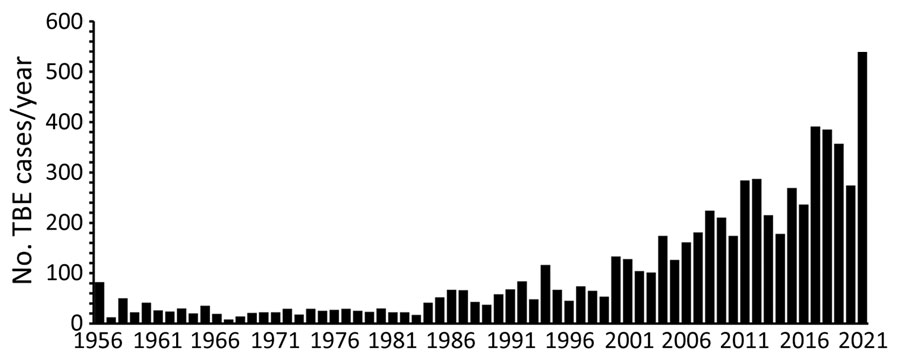Volume 28, Number 2—February 2022
Research
Burden of Tick-Borne Encephalitis, Sweden
Figure 1

Figure 1. Reported tick-borne encephalitis cases per year, Sweden, 1956–2021. Tick-borne encephalitis became a notifiable disease in Sweden in July 2004; thus, the number of reported cases before 2005 is less certain than the number of cases from 2005 on. Source: Swedish Public Health Agency (https://www.folkhalsomyndigheten.se), 2021.
Page created: December 02, 2021
Page updated: January 24, 2022
Page reviewed: January 24, 2022
The conclusions, findings, and opinions expressed by authors contributing to this journal do not necessarily reflect the official position of the U.S. Department of Health and Human Services, the Public Health Service, the Centers for Disease Control and Prevention, or the authors' affiliated institutions. Use of trade names is for identification only and does not imply endorsement by any of the groups named above.